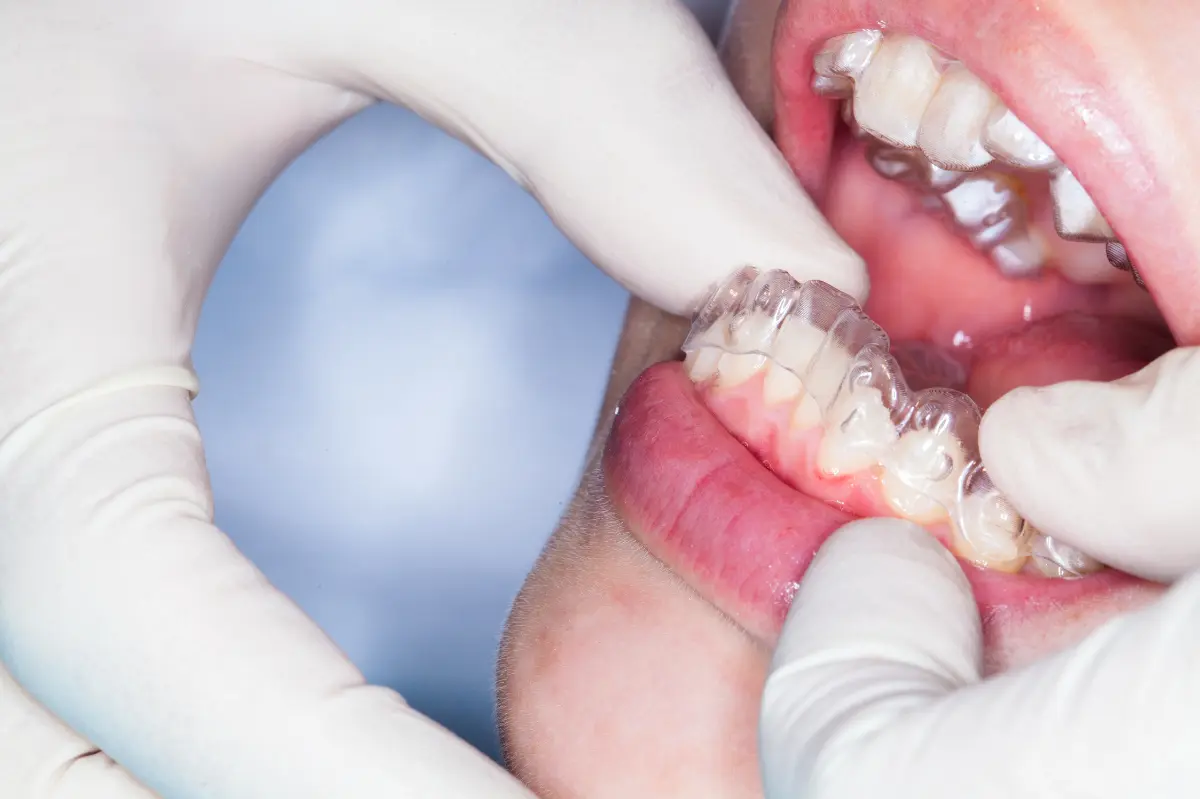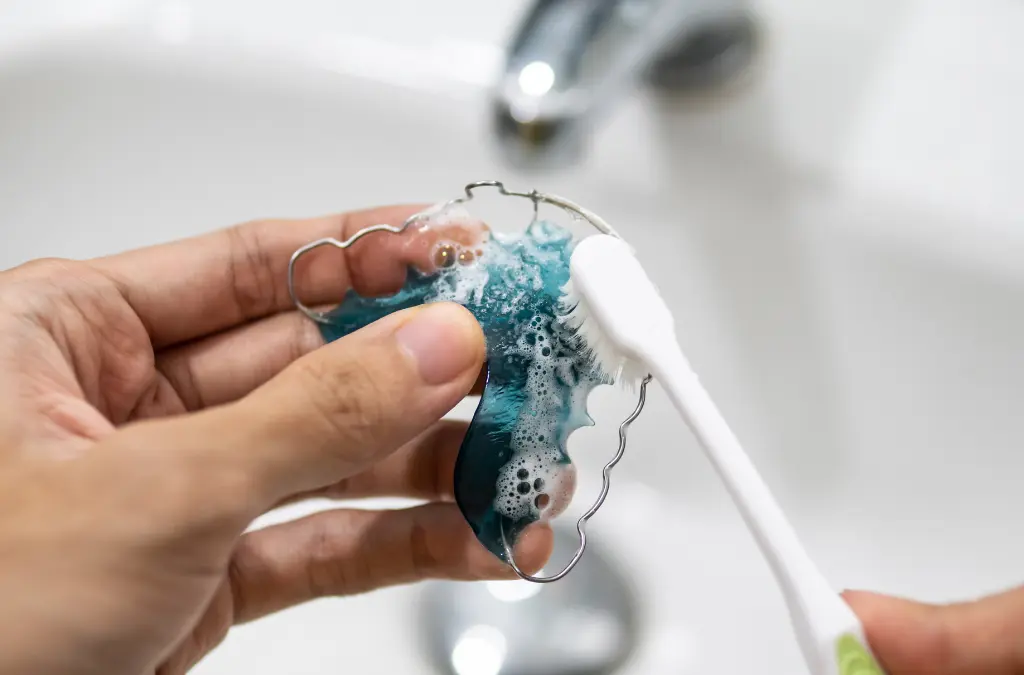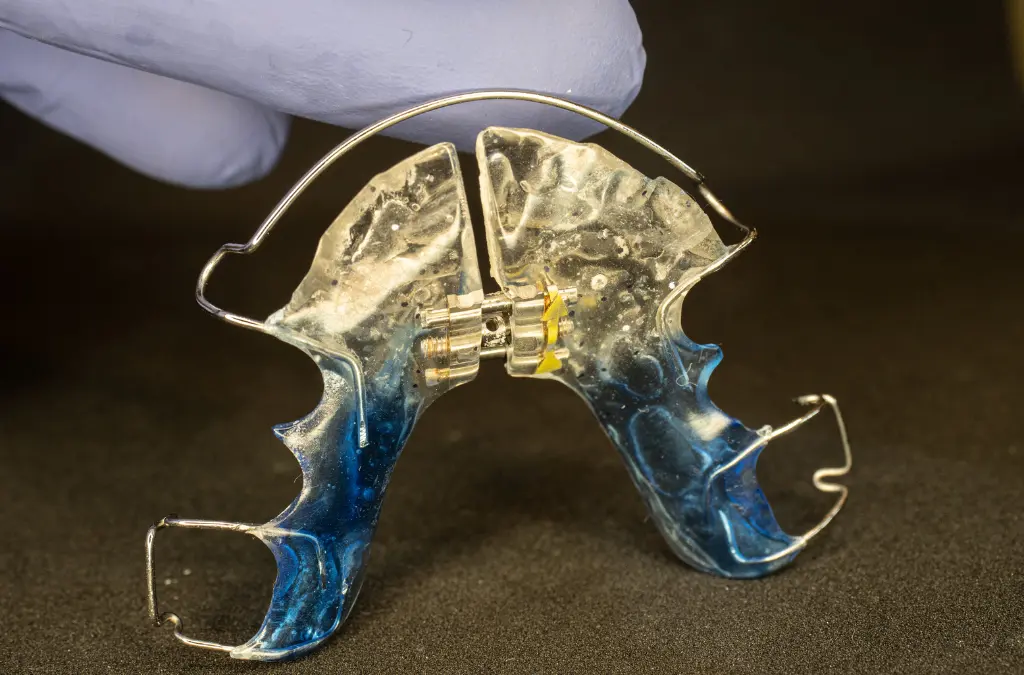
Retainer Replacement: Your Complete Guide to Lifelong Maintenance and Costs
Retainers play a vital role in orthodontic treatment, helping to maintain the alignment of teeth after braces or other corrective measures. These custom-made devices are designed to hold teeth in their new positions, preventing them from shifting back to their original misaligned state. While retainers are durable and built to withstand everyday use, they may need replacement in the future. In this article, we will explore the signs that indicate it’s time to replace your retainer and shed light on the frequency of retainer replacement.
I. How Do I Know When to Replace My Retainer?
Retainers, like any dental appliance, are subject to wear and tear. Over time, changes in fit, damage, or wear can indicate that a retainer needs to be replaced. Here are some signs and indicators to be aware of:
- Changes in Fit: If your retainer feels noticeably loose or doesn’t fit as snugly as it used to, it is a sign that the retainer has worn out or undergone deformation. A poor fit compromises the retainer’s effectiveness.
- Visible Damage: Inspect your retainer regularly for visible damage such as cracks, chips, or broken wires. These can impair the retainer’s functionality and effectiveness.
- Excessive Wear: Retainers that have been worn consistently for a long time may exhibit signs of wear, such as thinning or flattening of the plastic or significant wear on the biting surfaces. Excessive wear diminishes the retainer’s ability to provide proper support to your teeth.
It is important to schedule an appointment with your orthodontist to assess the condition of your retainer and determine if a replacement is necessary.
SCHEDULE A CONSULTATION
II. Frequency of Retainer Replacement
One common question patients have is whether they need to get a new retainer every year. The frequency of retainer replacement depends on individual circumstances and the recommendation of your orthodontist. While some individuals may require new retainers annually, others may go for longer periods without needing a replacement.
Factors that influence the need for retainer replacement include the original condition of your teeth, the length and complexity of your orthodontic treatment, and your orthodontist’s evaluation of your specific case. Some patients may be advised to transition from full-time retainer wear to nighttime-only wear after a certain period, reducing the need for frequent replacement.
It’s essential to follow your orthodontist’s guidance regarding retainer wear and replacement. Regular check-ups and communication with your orthodontic provider will ensure that your retainer is functioning optimally and serving its intended purpose.
In the next sections, we will continue to address your remaining questions regarding retainer replacement, clear vs. wire retainers, the importance of long-term retainer use, the cost of getting a new retainer, insurance coverage, and the role of orthodontists in retaining molds. Regenerate response
III. Long-Term Retainer Usage
Many patients wonder if it’s necessary to continue wearing a retainer after a certain period, such as 10 years. While individual circumstances may vary, it is generally advisable to maintain lifelong retainer usage to preserve the results of orthodontic treatment. Here’s why:
- Tooth Stability: Teeth have a natural tendency to shift over time, even after orthodontic treatment. Wearing a retainer helps prevent this shift and ensures that your teeth remain aligned. After the initial phase of full-time retainer wear, your orthodontist may recommend transitioning to wearing the retainer at night to maintain stability.
- Orthodontic Investment: Orthodontic treatment requires a significant investment of time, effort, and finances. Wearing a retainer indefinitely helps protect this investment by safeguarding the alignment achieved through braces or other orthodontic appliances.
- Individual Variations: Each person’s teeth and jaws have unique characteristics, which can contribute to potential shifting over time. By wearing a retainer consistently, you minimize the risk of relapse and maintain the optimal alignment achieved through your orthodontic treatment.
- Cost and Convenience: Regular retainer wear reduces the likelihood of needing extensive orthodontic retreatment in the future, which can be costly and time-consuming. By wearing your retainer as recommended, you avoid the potential inconvenience and expenses associated with correcting misaligned teeth down the line.
IV. Metal Retainers vs. Clear Retainers
When it comes to the choice between metal and clear retainers, it’s important to consider their lifespan and durability. Here’s a comparison of the two types:
- Lifespan: Metal retainers, typically made of stainless steel or nickel-chromium alloy, are generally more durable and long-lasting compared to clear retainers. They can withstand the wear and tear of regular use over an extended period.
- Visibility: Clear retainers, usually made of a transparent plastic material, are more aesthetically pleasing as they are nearly invisible when worn. This can be a significant advantage for individuals who prefer a discreet appearance.
- Maintenance: Metal retainers are relatively easier to maintain and clean. They can be brushed and rinsed with ease, whereas clear retainers may require special cleaning solutions or careful handling to avoid discoloration or damage.
- Comfort: Clear retainers tend to be more comfortable to wear for many individuals as they are custom-made to fit the shape of the teeth closely. Metal retainers, while effective, may feel slightly bulkier or cause minor discomfort for some wearers.
Ultimately, the choice between metal and clear retainers depends on individual preferences, durability requirements, and orthodontic recommendations. Your orthodontist will help you decide the best type of retainer.

V. Is Wearing a Retainer Forever Worth It?
Wearing a retainer indefinitely offers numerous benefits for maintaining the results of orthodontic treatment. Let’s explore why it’s worth considering lifelong retainer usage and address the potential consequences of discontinuing retainer use:
Benefits of Wearing a Retainer Forever
- Sustained Alignment: Teeth have a natural tendency to shift over time, even after orthodontic treatment. Wearing a retainer as recommended by your orthodontist helps prevent relapse and ensures that your teeth remain in their corrected positions, preserving the alignment achieved through braces or other orthodontic appliances.
- Protecting Your Investment: Orthodontic treatment requires a significant investment of time, effort, and finances. Wearing a retainer indefinitely safeguards this investment by maintaining the optimal alignment of your teeth.
- Oral Health Benefits: Properly aligned teeth are easier to clean, reducing the risk of tooth decay, gum disease, and other oral health issues. Wearing a retainer supports good oral hygiene practices by keeping your teeth in their corrected positions, making it easier to brush and floss effectively.
- Long-Term Aesthetics: A well-aligned smile not only enhances your oral health but also contributes to your overall appearance. By wearing a retainer consistently, you can enjoy the long-term aesthetic benefits of a beautifully aligned smile.
Potential Consequences of Discontinuing Retainer Use
- Tooth Shifting: Without regular retainer wear, teeth may gradually shift back towards their original misaligned positions. This can compromise the results of orthodontic treatment and require additional intervention to realign the teeth.
- Relapse: Relapse refers to the regression of teeth towards their pre-treatment positions. Depending on the severity of relapse, retreatment with braces or clear aligners may be necessary to restore proper alignment, potentially resulting in additional time, cost, and inconvenience.
- Financial Considerations: Discontinuing retainer use can lead to the need for retreatment, which can incur additional expenses. By wearing your retainer as recommended, you can minimize the risk of relapse and avoid potential financial burdens associated with correcting misaligned teeth in the future.
VI. Cost of Getting a New Retainer
The cost of getting a new retainer can depend on factors such as the type of retainer and geographic location. Here’s an overview of the typical costs:
- Traditional Hawley Retainers: The cost of traditional Hawley retainers, which consist of a metal wire and acrylic, generally ranges from $150 to $300 per arch.
- Clear Retainers: Clear retainers, such as those made of Essix or Vivera material, usually cost between $200 and $400 per arch. These retainers are custom-made using transparent plastic and provide a more discreet appearance when worn.
- Bonded Retainers: Bonded retainers, which are fixed to the back of the teeth, tend to be more expensive due to their permanent nature. The cost can range from $250 to $600 per arch.
Your orthodontist can provide an accurate estimate of the retainer replacement cost based on your specific needs and location. They can provide detailed information about the pricing structure and any additional fees associated with the replacement process.
Please note that the prices mentioned are approximate and can vary. Insurance coverage and orthodontic warranty plans may also affect the out-of-pocket costs for retainer replacement. It’s advisable to check with your insurance provider regarding coverage for retainer replacement and discuss any financial concerns with your orthodontist.

VII. Retainer Molds and Orthodontists
Retainer molds, also known as impressions or dental casts, are commonly used by orthodontists during the initial stages of treatment to create custom retainers. However, the retention of these molds may vary among orthodontic practices. Here’s what you need to know:
- Retainer Mold Retention: While some orthodontists may keep the retainer molds of their patients, others may not. The decision to retain molds depends on various factors, including the orthodontist’s office policy, storage capacity, and the length of time since your treatment.
- Obtaining a Replacement Retainer: If your orthodontist has retained your retainer mold, obtaining a replacement retainer becomes relatively straightforward. They can use the existing mold to create a new retainer that matches the shape and alignment of your teeth. This process typically involves taking new impressions if the retained mold is not suitable due to changes in your dental alignment.
If your orthodontist does not keep retainer molds or if the mold is no longer usable, they will need to take new impressions of your teeth to create a replacement retainer. This involves using dental putty or a digital scanner to capture the current alignment of your teeth accurately.
It’s important to communicate with your orthodontist regarding the availability of your retainer mold and discuss the most suitable option for obtaining a replacement retainer.
VIII. Clear Retainer Costs and Insurance Coverage
The cost of clear retainers can vary depending on factors such as the type of clear retainer, geographic location, and the specific orthodontic practice. Here’s some information on the average costs and potential insurance coverage for retainer replacement:
- Average Cost of Clear Retainers: Clear retainers, such as Essix or Vivera retainers, typically range in price from $200 to $400 per arch. However, the exact cost varies depending on the complexity of the case and materials used.
- Insurance Coverage: Dental insurance coverage for retainer replacement varies among insurance plans. Some insurance policies may cover a portion of the cost, while others may not provide coverage specifically for retainers. It’s important to review your insurance policy or contact your insurance provider directly to understand the extent of coverage for retainer replacement.
Additionally, orthodontic warranty plans or retainers included as part of your initial treatment may provide some coverage or discounts for replacement retainers. Remember to discuss the cost and insurance coverage aspects with your orthodontist to gain a clear understanding of the expenses involved in obtaining a replacement retainer. They can provide more specific information based on your individual situation and help you navigate insurance-related queries.
IX: Conclusion
Remember, proper retainer care, including regular cleaning and following your orthodontist’s instructions, is essential to maintain their effectiveness. If you notice any signs of wear, damage, or discomfort, consult your orthodontist promptly to determine if a replacement is necessary.
By staying proactive with your retainer care and replacement, you can continue to enjoy the benefits of your orthodontic treatment and maintain a confident, healthy smile for years to come.
